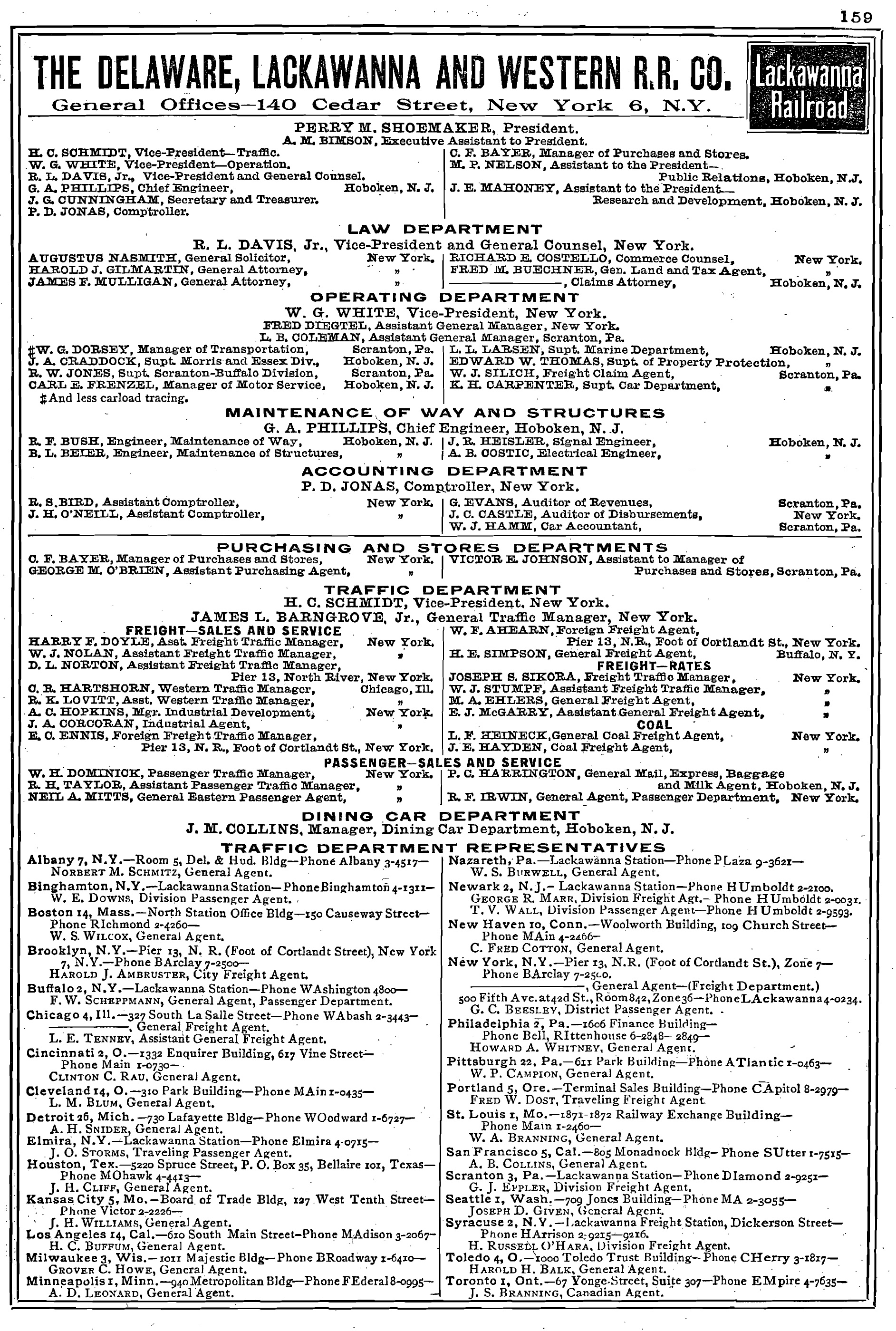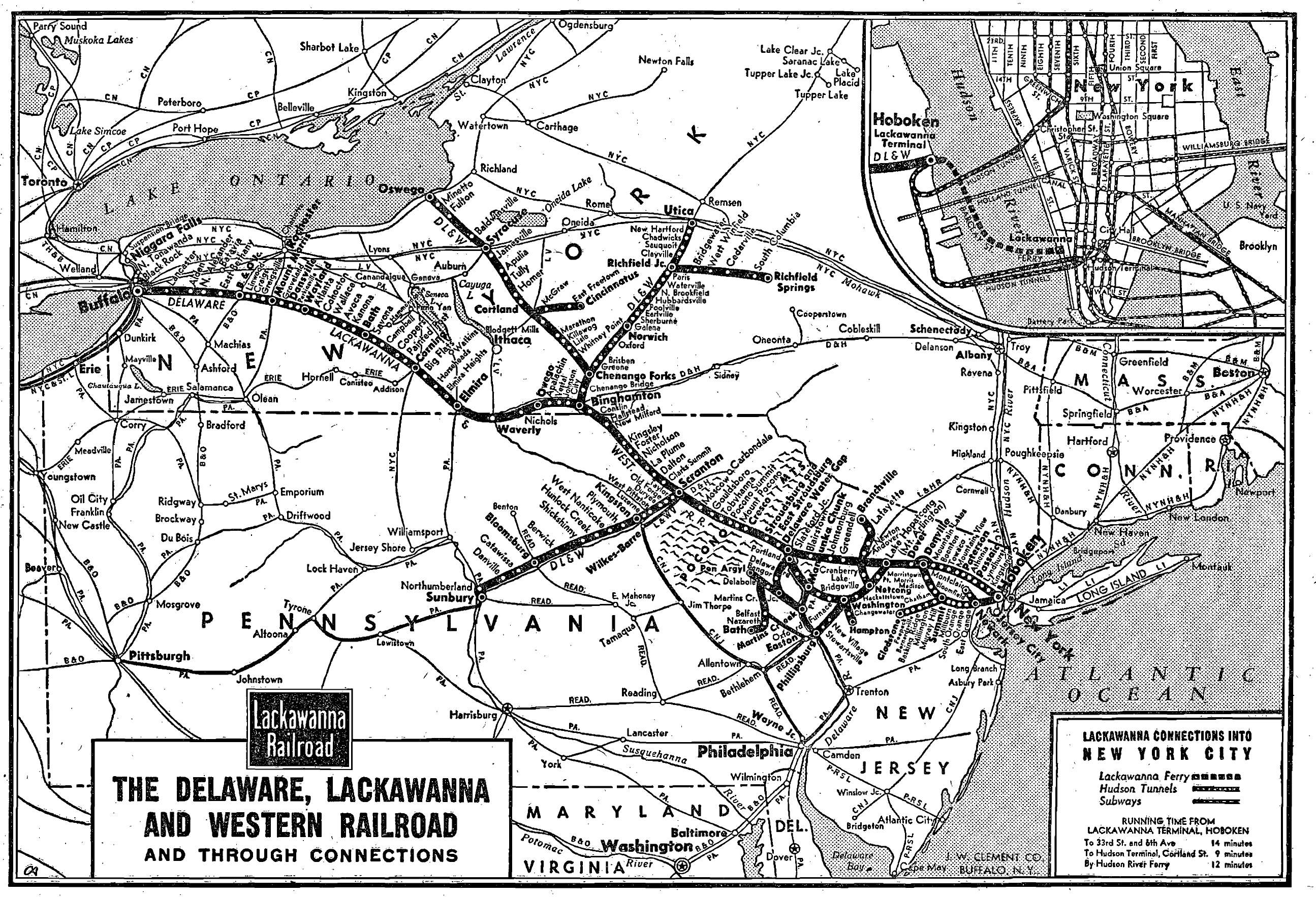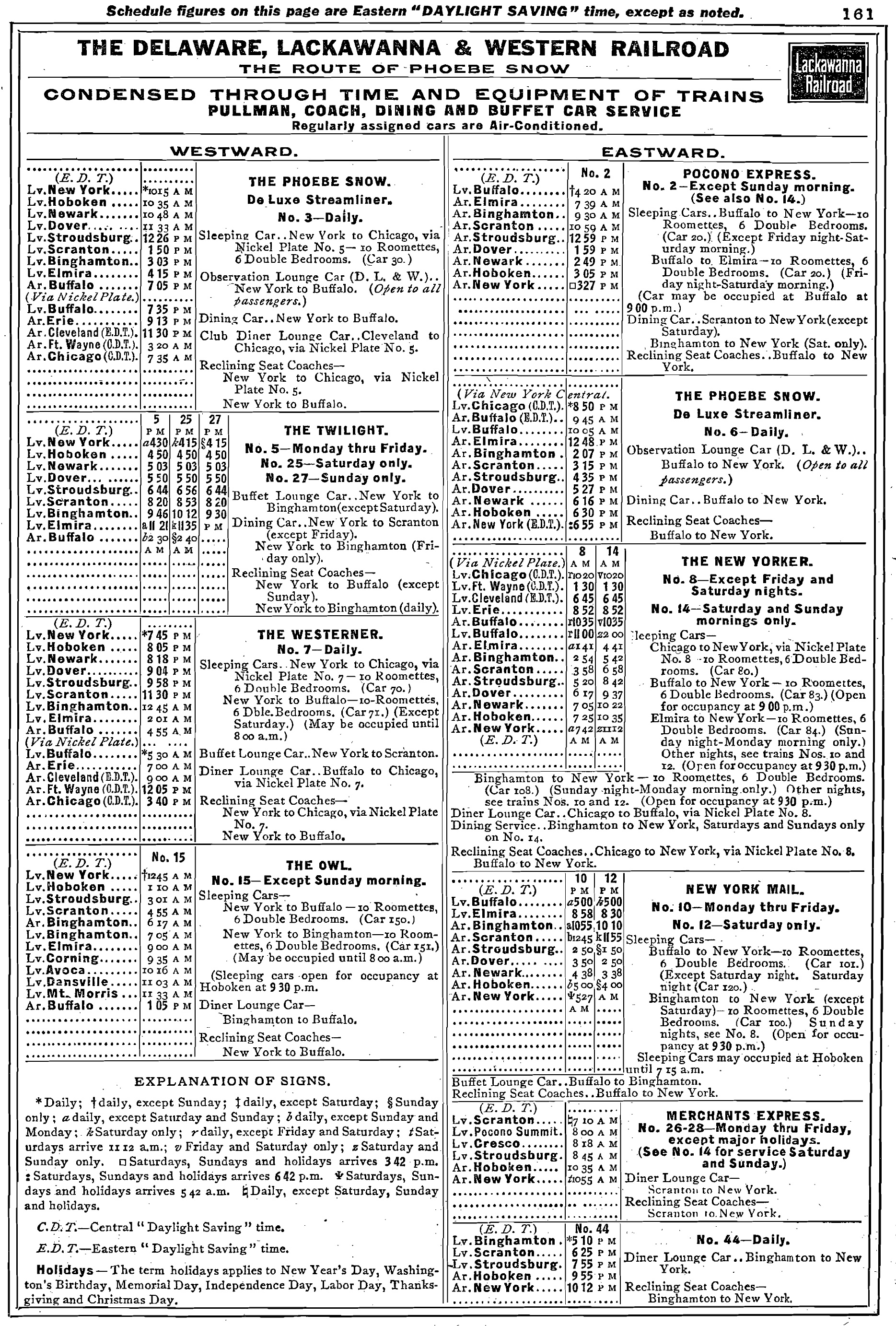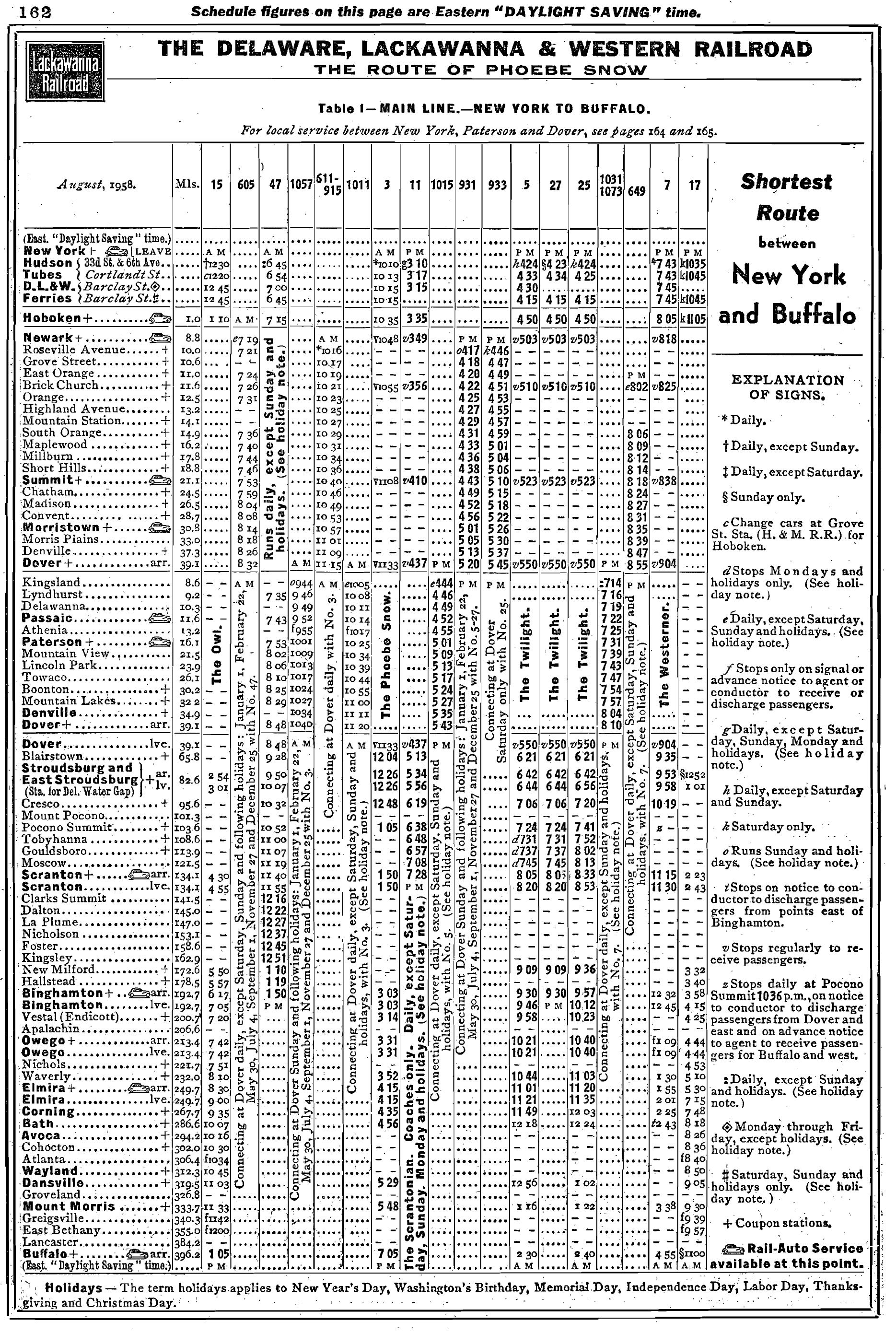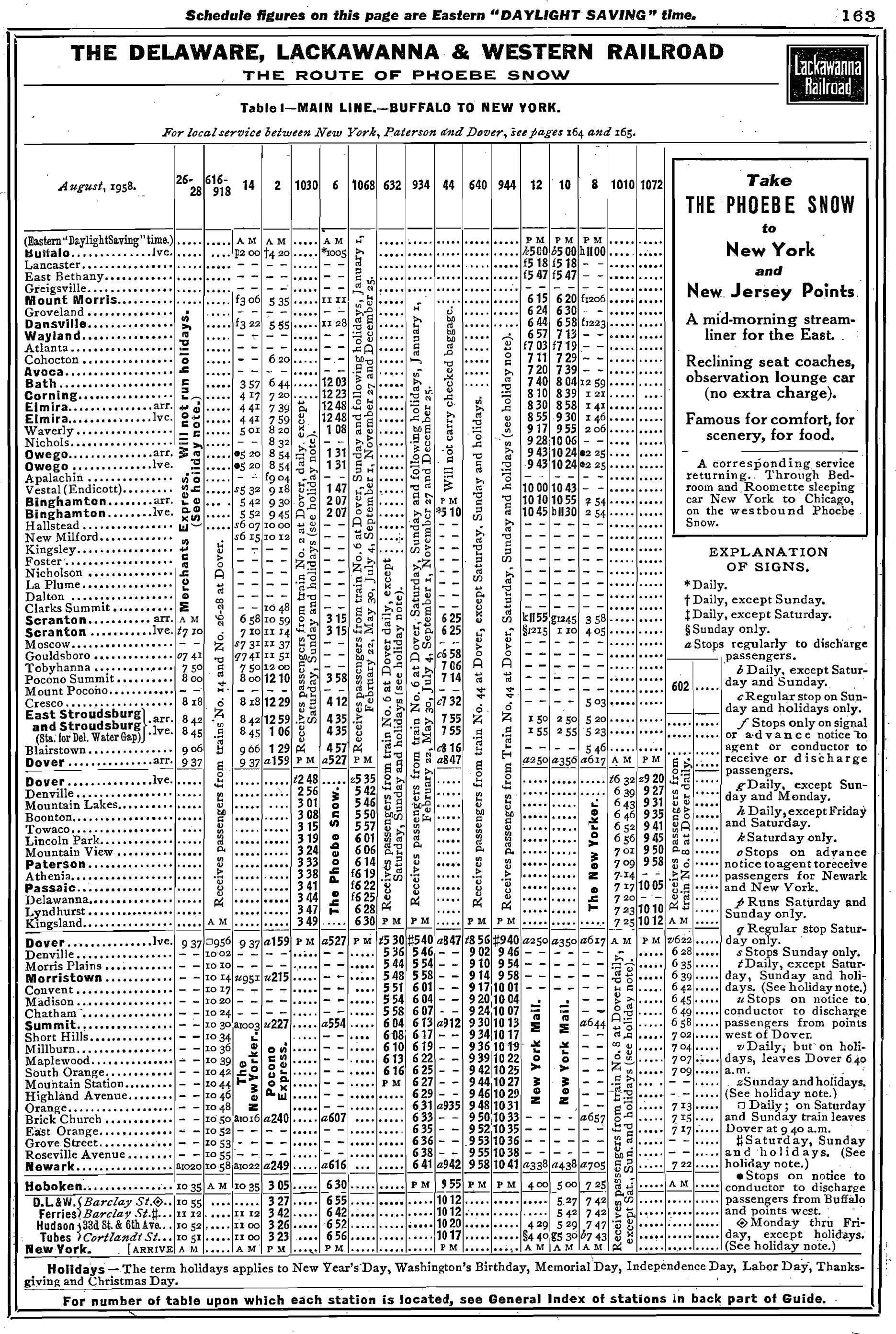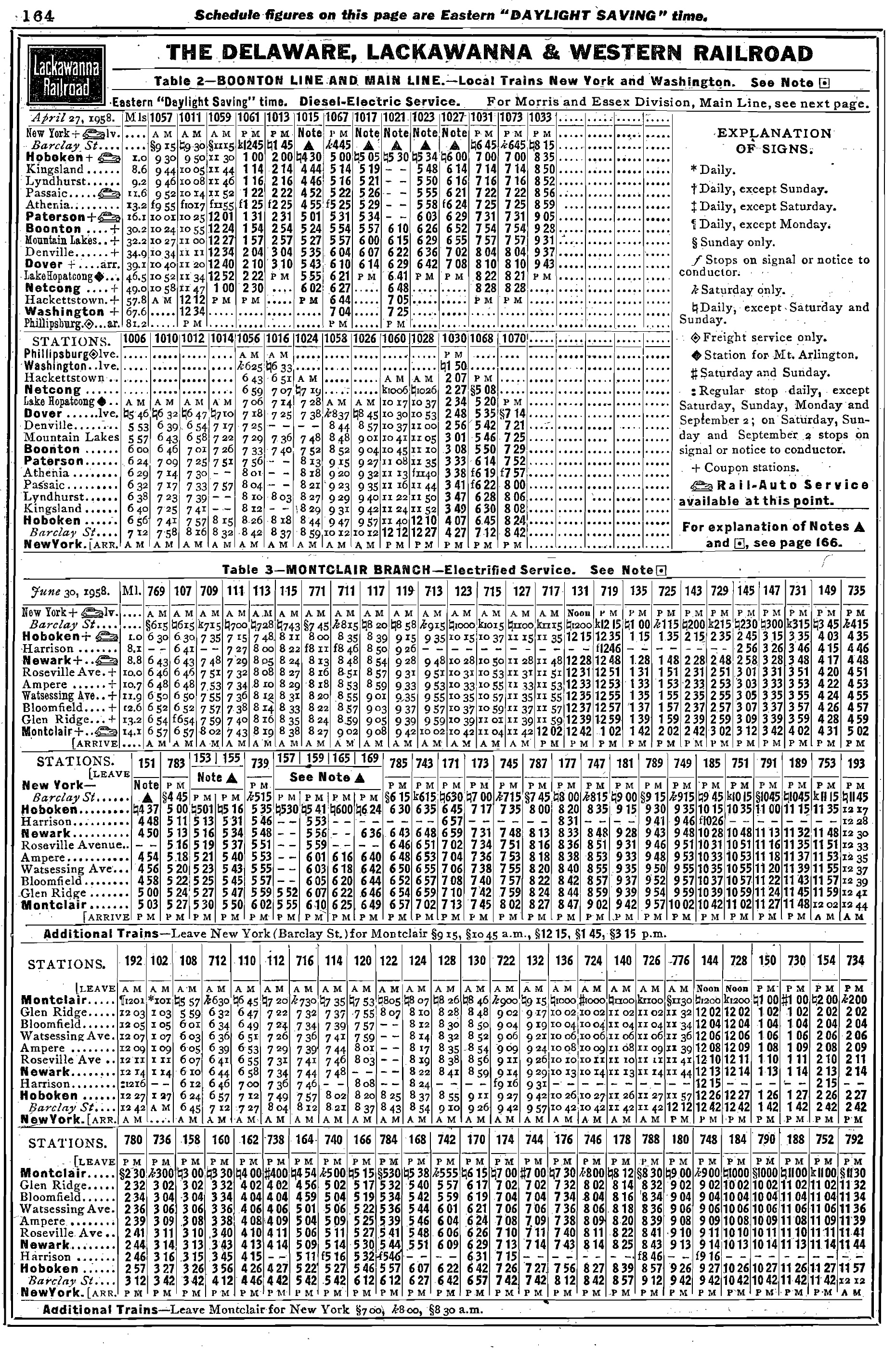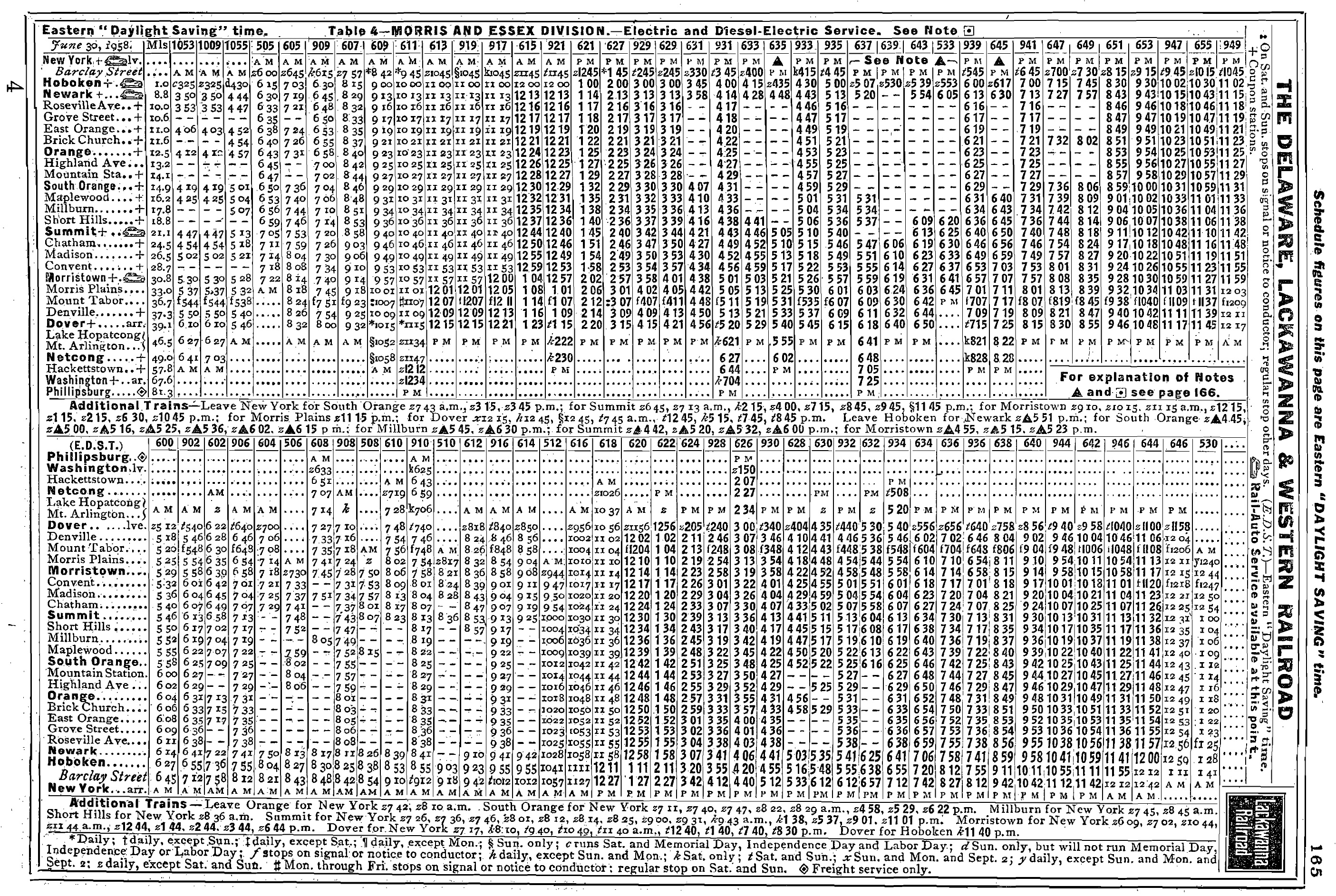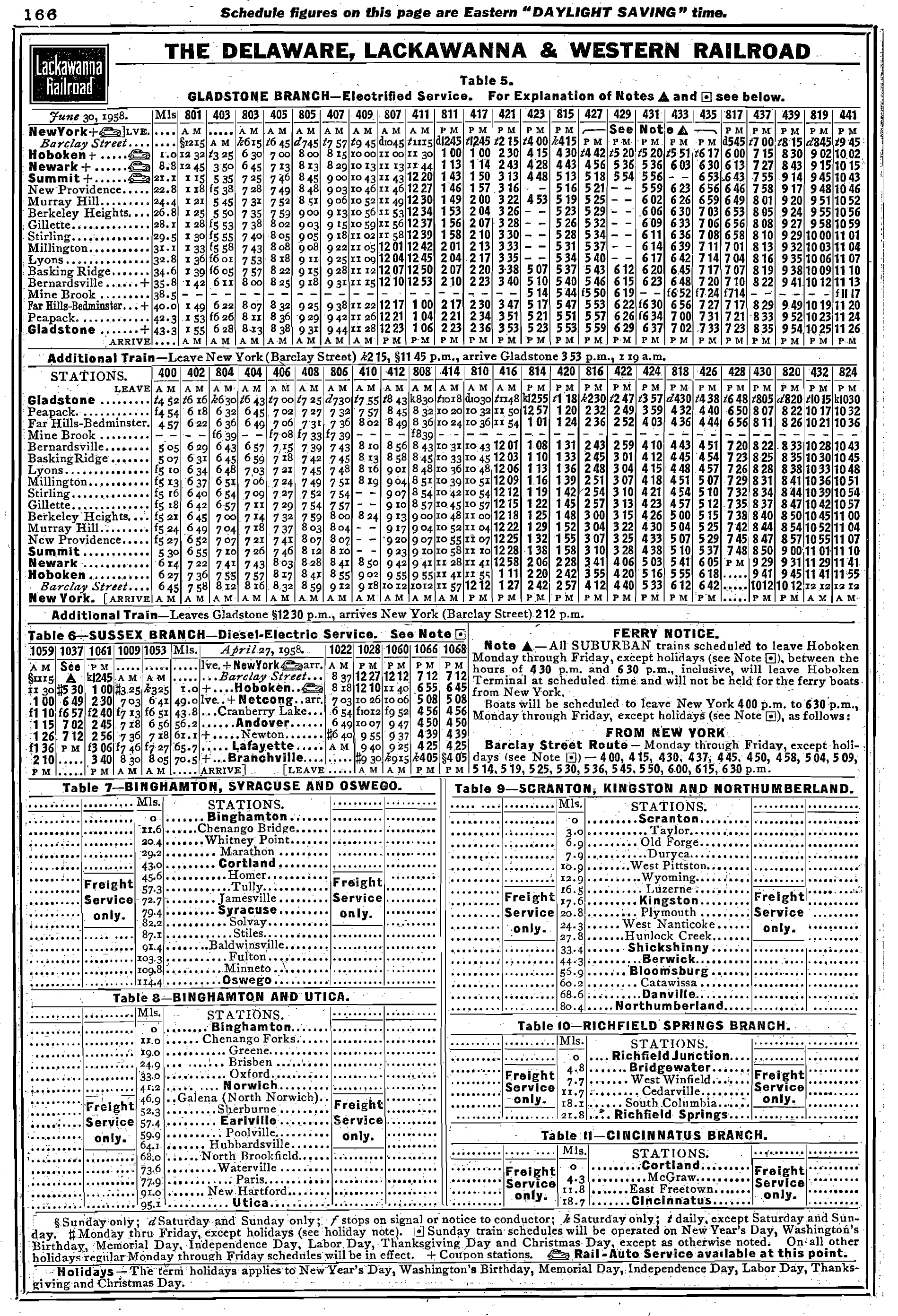Lackawanna Railroad Timetables (October, 1958)
Published: February 20, 2024
By: Adam Burns
Presented below is the Lackawanna's public timetables from the October, 1958 issue of The Official Guide Of The Railways, during the company's last few years of operation as an independent system before disappearing into the new Erie-Lackawanna.
The Delaware, Lackawanna, and Western Railroad (DL&W) significantly impacted the growth and development of Pennsylvania and New York throughout the 19th and 20th centuries.
Chartered in 1832 as the Ligget's Gap Railroad, and later renamed in 1853, DL&W was systemically designed to carry shipments of anthracite coal from Pennsylvania's rich Lackawanna Valley mines to eastern U.S markets, thriving on these coal operations.
DL&W began operating their first passenger service in 1856 between Scranton, Pennsylvania, and Great Bend. The success of this route made DL&W expand into lucrative markets like New York, Buffalo, and Oswego.
By the late 1870s, DL&W had grown from a regional line into a key player in American railroads, recognized for its operational efficiency and service reliability.
Scientific advancements complemented DL&W's offerings. Its fleet of steam engines evolved over time, most notably the fast, powerful, and efficacious "Super-Power" steam locomotives. Also, the railroad was one of the first to adopt automatic block signaling, a train control system contributing to over a decade of accident-free operations.
DL&W's commitment to customer satisfaction was evident in their passenger services. They revolutionized the commute with the first 'Phoebe Snow' in 1949 – a streamlined, daily passenger train that used anthracite – reducing airborne pollutants during the trip from Hoboken (NJ) to Buffalo (NY). It became instantly notable for its punctuality and cleanliness.
Over the years, DL&W undertook several transformative measures. In 1870, they merged with Morris and Essex Railroad, extending their reach to Hoboken, New Jersey, and providing access to New York City through a ferry service. In the mid-1950s, DL&W implemented major electrification projects to improve its operations.
However, the rise of the highway system and air travel led to an inexorable decline in revenues. In an attempt to survive, DL&W merged with the Erie Railroad in October 1960, forming the Erie Lackawanna Railway.
Public Timetables (October, 1958)
Despite this new entity's initial success, the devastating Hurricane Agnes (1972) caused significant track damage leading to its financial downfall. Following bankruptcy in 1972, the Consolidated Rail Corporation absorbed much of its operations in 1976.
Specific remnants of the DL&W remain noteworthy. The Scranton-based Steamtown National Historic Site houses several surviving pieces of DL&W rolling stock and locomotives.
The Boonton Line in New Jersey, now run by NJ Transit, was initially built as the DL&W's 'New Jersey Cut-Off' freight bypass, retaining symbolic DL&W-styled concrete-arch overpasses and attractive graffiti-covered reminders of an exorbitant project.
DL&W's bold logo - an arrow piercing the letters 'DL&W' - continues to invoke strong nostalgia among railfans. The array of books, documentaries, and model trains based on DL&W's operations testify to the enduring impact and fascination for this once mighty railroad.
Depicting the history of 130 years, the depiction of the Delaware, Lackawanna, and Western Railroad is not only about the story of a railroad company. It's about an agent of change that drove economic growth and technological advancement, held an exceptional safety record, and left an indelible mark in the annals of American railroad history.
Recent Articles
-
Georges Creek Railway: Maintaining The Old WM
Jul 27, 24 12:38 AM
The Georges Creek Railway was a former Maryland short line operating 14 miles of the ex-Western Maryland/C&P near Westernport, MD. Service lasted from 2007-2019. -
The "Lone Star": Amtrak's Former "Texas Chief" Route
Jul 26, 24 11:52 PM
The "Lone Star" was Amtrak's renamed "Texas Chief" after the Santa Fe demanded the carrier stop using the "Chief" name due to declining service. It operated from 1974-1979. -
Union Railroad Company: Serving Pittsburgh's Steel Mills
Jul 26, 24 10:12 PM
The Union Railroad Company is a historic short line/industrial system that has served Pittsburgh's steel industry since 1896.
